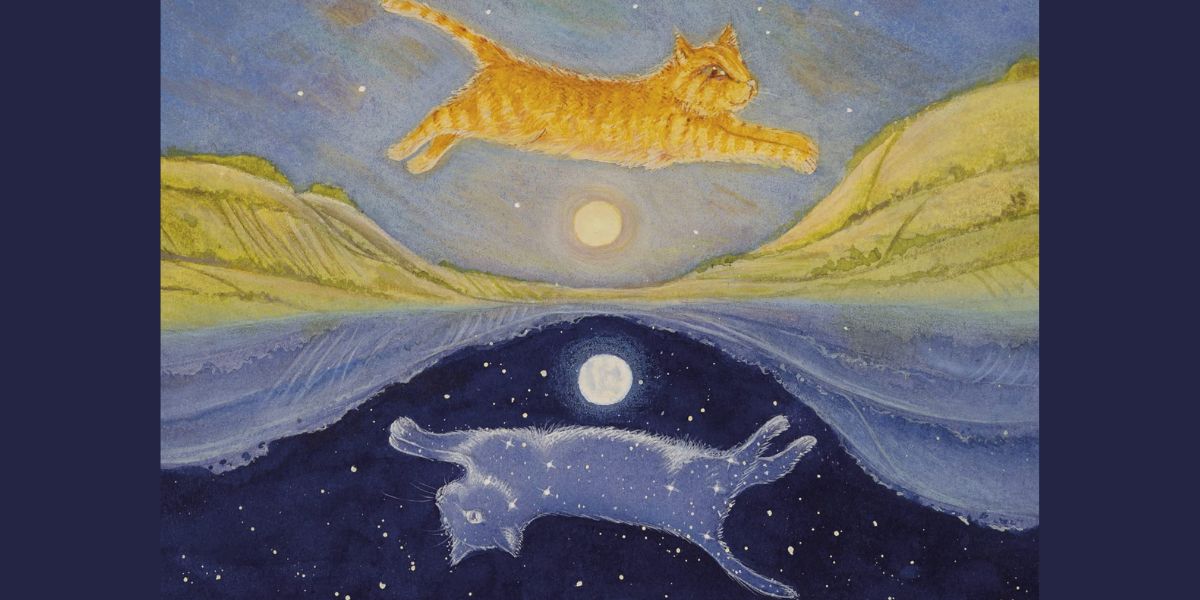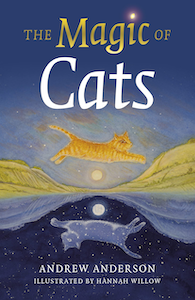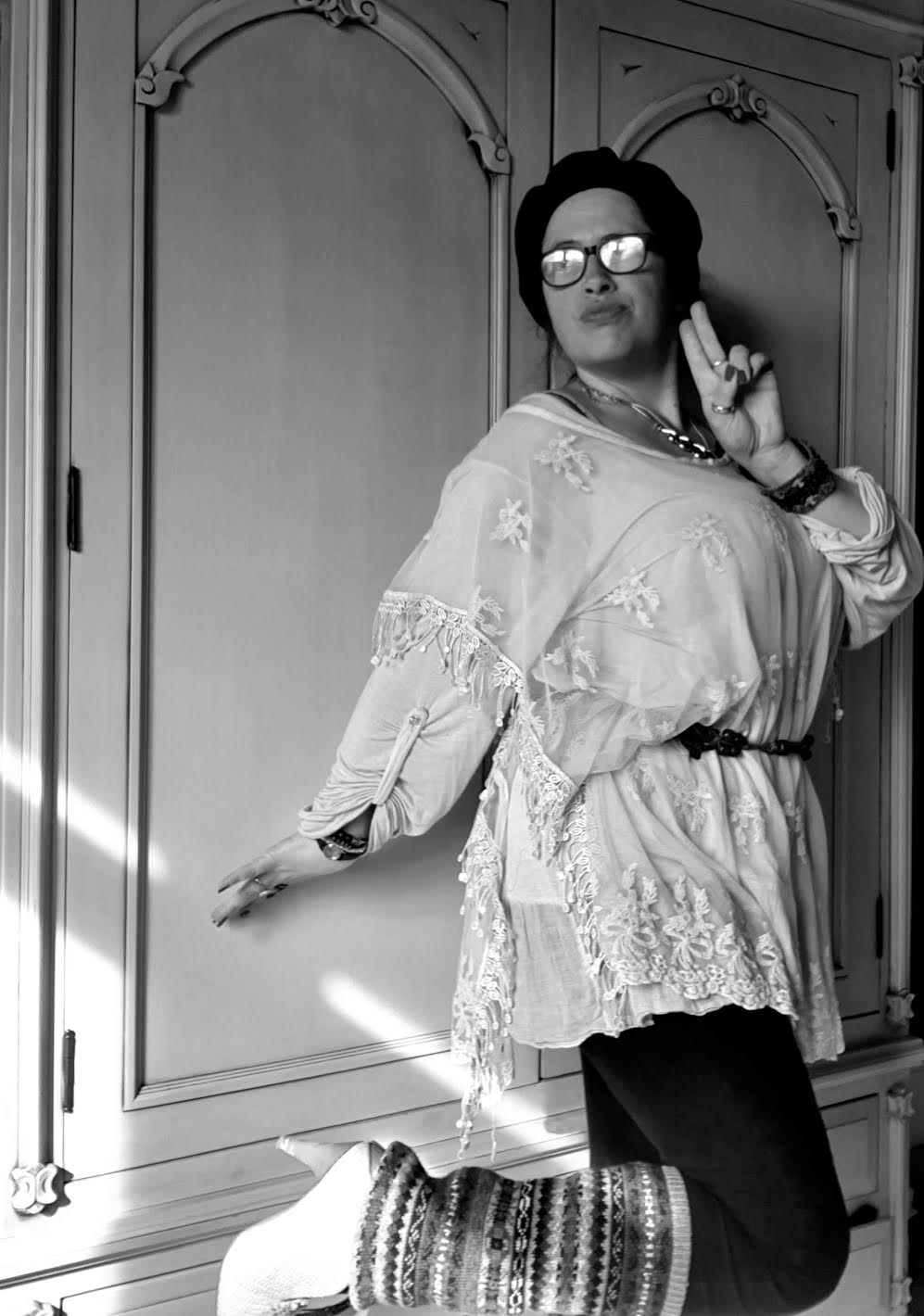
Cats: Keepers of the Spirit World, by John A. Rush
Destiny Books, 1644117460, 208 pages, October 2023
Cats are polarizing creatures. People tend to either love them or hate them, and while many cultures, most notably the ancient Egyptians, revered cats, their Christian associations with witchcraft and the Devil made them the target of persecution in medieval Europe. In the thirteenth century, Pope Gregory IX (1227-1241) even issued a papal bull condemning cats as agents of Satan.1 Superstitions about cats, especially black ones, being unlucky or demonic, persist to this day, and humans who spend too much time around felines are often ridiculed for being crazy cat people.
In Cats: Keepers of the Spirit World, author John A. Rush, Ph.D., N.D., explores humanity’s complex relationship with cats as both pets and spirit animals, which goes back in time over thirty million years.
“This book is about origins, human and cat, for it is by looking at our ancient past that we can identify our deep connection to cats and our eventual attachment of spiritual characteristics to them,” Rush says.2
Rush is a retired anthropology professor and naturopathic doctor with an impressive oeuvre of published works on a variety of topics, from Witchcraft and Sorcery: An Anthropological Perspective of the Occult (1974) to Biological Anthropology: A New Synthesis (2023). He and his wife manage a colony of about fifteen or more feral cats, and over the past thirty-five years he has gained deeper insights into feline behavior through observation.
“Cats are apex predators and our ancient ancestors, emerging in the Oligocene (thirty-four to twenty-three million years ago) and Miocene (twenty-three to six million years ago), were prey animals for millions of years,” Rush says.3
The anxiety and fear cats produced in our primitive ancestors influenced human evolution by altering our genetic coding. The rise of bipedalism in the late Miocene may have evolved as a response to these predators, so hominids could appear larger and avoid predation.
Over time, the relationship between cats and hominids became more symbiotic. Following the example of feline predators, our ancestors learned to supplement their diet of nuts and berries by scavenging the carcasses left behind by cats, using stone tools like teeth and claws to rend flesh from bone. “Not only are the cats eating our ancestors,” Rush says, “but they are also leaving us food in our time of need.” [19] He suggests that this gruesome exchange may be the origin of the concept of human and animal sacrifice. As the saying goes, you are what you eat, and some prehistoric cave paintings depicted humans with animal traits in order to create a spiritual link between hunter and hunted through sympathetic magic.
The development of weapons and other primitive technology by Neanderthals and early modern humans flipped the script, and our ancestors became apex predators. A simple stick may have been the weapon of choice for millions of years, and Rush notes that his own cats are wary when they see him wielding a broom or a rake, which cannot be a learned behavior, since he doesn’t “whack” his cats.4 He sees their wariness as evidence that they have an instinctive aversion to sticks preserved in their genes.
Even though we are now at the top of the food chain, the primal fear of cats is still hardwired into our genetic coding. Rush proposes that humanity’s atavistic fear of being devoured by wild cats has been preserved in the myths of cannibalistic monsters like the baby-killing demoness Lilith, who could shapeshift into a cat, which brings to mind the myth of cats sucking the breath out of sleeping infants, a superstition that persists today.
Cats still see us as a form of food, and they certainly have a way of bewitching us into caring for them. With the rise of agriculture, domestication of cats may have occurred because cats were drawn to the rodents raiding our grain stores and humans valued their companionship and talent for pest control.
Rush dispels the popular belief that cats were worshiped in ancient Egypt, and emphasizes that their otherworldly characteristics were associated with gods, while the cats themselves were not deified. From Rush’s anthropological perspective, worship entails demeaning subservience to a deity.
“In my opinion, there is nothing divine or spiritual in worshipping a god to whom you are enslaved (Yahweh, God the Father, or Allah),” he writes. “Identification with various animals is what brings out our spiritual nature.”5
The concept of animal worship was used by cultures that claimed to be more civilized in an attempt to denigrate the Egyptians as foolish and primitive. Rush emphasizes that Egyptian deities depicted with cat heads, such as Bast and Sekhmet, were not deified cats, but goddesses with feline characteristics.
Rush devotes most of this book to providing a wide survey of cat folklore and mythology throughout the world. In “Issues of Cat Identity and Behavior in Spirituality” which is the longest and most captivating chapter, he demonstrates that the cat is, cross-culturally, a potent dualistic symbol, imbued with great power, for good or ill.
The physical power of cats was both admired and feared by our ancestors. The muscular legs of domestic cats and leopards enable them to climb trees and leap from branches, and Rush says that South African leopards “could snatch one of our Australopithecine cousins and drag him or her up a tree.”6 Trees often grew out of cave openings, and the chewed up bones of our bipedal ancestors have been discovered in the ancient lairs of leopards.
Cats, as symbols of prowess and power, are often the guardians of thresholds:
“Along with the ability to see in the dark and their acute hearing, the cat’s tendency to seek out secluded, dark, protected places to hide and sleep connects the cat to role of guardian of the Underworld,” Rush says.7
He shares a cute anecdote about his own cats guarding the entrance to his bathroom “like the Sphinx on the Giza Plateau,”8 and any cat person can certainly relate, since most cats like to follow their owners to the bathroom. Almost every time I leave mine, all three of my cats are waiting for me outside the door. I have a long-haired black cat who was a stray I adopted four years ago, as well as two orange tabbies I adopted a little over a year ago from my next door neighbor, who oversees a cat colony. As a fellow cat lover, I was touched by the heart-warming personal anecdotes Rush shares about his own cats to elucidate his points about cat behavior, which he presents with the emotional detachment of scientific observation.
The sections of this book that interested me the most explored shamanistic beliefs involving humans shapeshifting into cats and the transmigration of souls:
“From Burma and other areas of Southeast Asia we hear that cats are keepers of souls,” Rush says. “In Laos, for example, souls are souls and they can migrate, and it doesn’t make any difference what animal they go into—they become part of that animal’s life force. I call this soul-shifting, somewhat like organ transplants.”9
Since souls can shift shape, a shaman can replace the soul of a sick body part with that of an animal. “Let’s say the soul of your legs leaves you, and you have trouble walking,” Rush says. “In Laos, the Hmong shaman can replace it with that of a cow or even a chicken.”10 Coming back to cats, Rush then shares a soul-shifting story he heard about a Hmong tribesman who died and his soul entered the pet leopard cat of the shaman who was trying to heal him. The shaman later left Laos and brought the cat with him to the United States in 1975, where it continues to haunt the streets to this day, exacting vengeance on anyone who harms Hmong people.
This urban legend demonstrates how, in modern times, mythological cats have persisted in the field of cryptozoology, and sightings of strange cat monsters still occur today. One of the weirdest examples Rush shares comes from the Pueblo and Navajo Indians of the southwestern United States, who claim that cacti-shaped cats with knives for paws get drunk off of cactus juice and cause trouble.11
Cats: Keepers of the Spirit World is a compelling exploration of the biological and spiritual evolution of humanity’s relationship with cats. Rush eloquently demonstrates how the mutual struggle to survive shaped the evolution of both of our species in profound ways, and even though we know very little about our primitive ancestors, his academic background as an anthropology professor lends an air of authority to this work. Cat lovers and armchair anthropologists alike will enjoy journeying with Rush into the mists of prehistory, and will no doubt learn something new from his comprehensive survey of cross-cultural cat folklore.

Rachel Christina McConnell is a witch, tarot reader, intuitive astrologer, and writing spider. She holds an MFA in Fiction from Columbia University in the City of New York. Her short stories have appeared in Dark Moon Lilith Press and Minerva Rising Press’s The Keeping Room. Links to her publications are available here: https://rachelchristinamcconnell.wordpress.com



